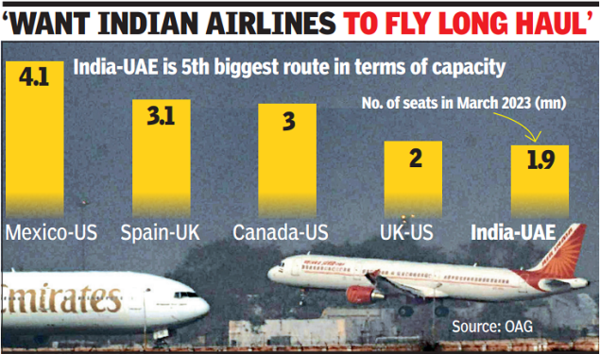[ad_1]
The UAE has urged India to increase the maximum number of seats between the two countries by 50,000 a week from about 65,000, but Scindia said, “at the moment we are not planning to increase it”.
India is one of the fastest-growing aviation markets in the world, with the demand for air travel outstripping the supply of aircraft.But most of India’s international air traffic is currently operated by Emirates and Qatar Airwayssupported by efficient hubs such as Dubai and Doha.

The government wants to regain traffic lost to foreign airlines and is pushing airlines to order more wide-body jets to meet demand.
Air India placed a record 470 orders for the jets last month and is aggressively pushing into the international market by offering passengers, especially the Indian expatriate, direct flights to long-haul destinations in the US.
Scindia said Air India’s order for wide-body jets and IndiGo’s plans for twin-aisle planes were signs that the “transition” had begun.
“From the moment Delhi connects directly to an international location, any passenger will prefer a direct connection rather than going through a hub in another country,” he said.
India is mobilizing to meet the transport needs of its 1.3 billion people, building new airports in the country’s most remote areas and expanding capacity at metro hub airports such as Delhi and Mumbai.
“We will see explosive growth in air traffic in India in the coming years,” the minister said, adding that the main reasons driving this growth are economic growth, rapid urbanization, rising disposable income and heightened aspirations.
The minister also sees greater scope for aerospace manufacturing in the country, saying companies are keen to produce more locally.
[ad_2]
Source link